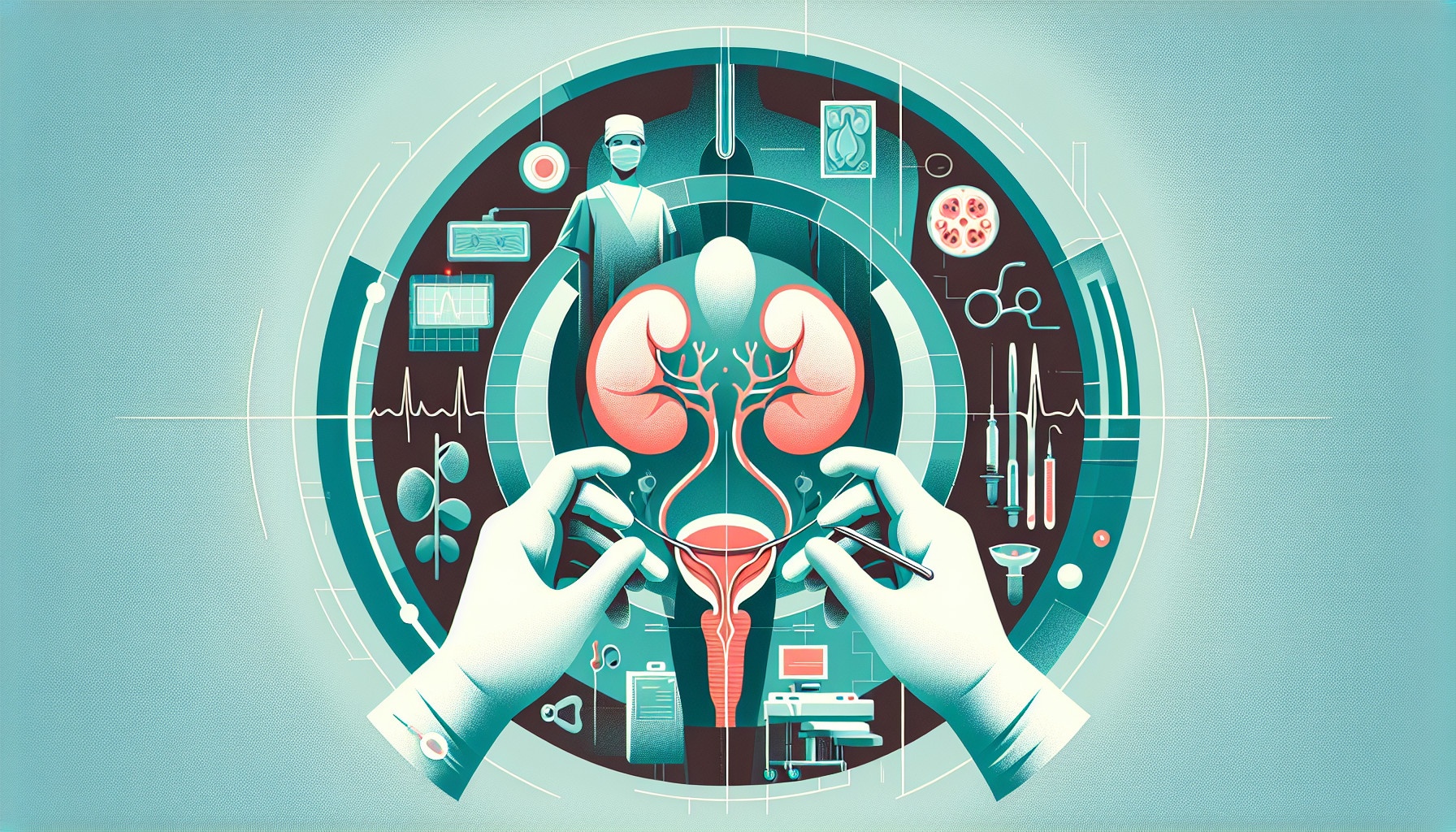Our Summary
This research paper discusses a surgical procedure called augmentation cystoplasty which is often used for bladder enlargement. This procedure is known to cause small blood vessel damage. The paper reviews the methods and techniques available for viewing these vessels during surgery, as well as the data from studies on important organs used in bladder enlargement. There are many ways to evaluate the condition of these small vessels, but using these methods during human surgery is still difficult and has limitations. While studies on animals have generally shown accurate results, there is a need for more reliable human studies. The researchers believe that better ways of viewing and evaluating small blood vessels during surgery could improve the results of bladder enlargement surgeries.
FAQs
- What is augmentation cystoplasty and why is it used?
- What are the challenges in evaluating the condition of small blood vessels during human surgery?
- How can improving the methods of viewing and evaluating small blood vessels impact the results of bladder enlargement surgeries?
Doctor’s Tip
After bladder surgery, it is important to follow your doctor’s instructions for proper healing and recovery. This may include taking prescribed medications, avoiding strenuous activities, and maintaining good hygiene to prevent infection. It is also important to stay hydrated and follow a healthy diet to support the healing process. If you experience any unusual symptoms or have concerns about your recovery, be sure to contact your doctor for guidance.
Suitable For
Patients who are typically recommended bladder surgery include those with conditions such as bladder cancer, interstitial cystitis, neurogenic bladder, and bladder dysfunction. These patients may experience symptoms such as urinary incontinence, frequent urinary tract infections, urinary retention, or bladder pain. Bladder surgery may be recommended when conservative treatments have not been effective in managing these symptoms.
In the case of augmentation cystoplasty, patients who have a small bladder capacity or reduced bladder compliance may be recommended for surgery to enlarge the bladder. This procedure may be necessary for patients who have had their bladder removed due to cancer or other conditions, or for those with congenital abnormalities affecting the bladder.
It is important for patients considering bladder surgery to discuss the potential risks and benefits with their healthcare provider. Bladder surgery is a major procedure that carries risks such as infection, bleeding, and complications with anesthesia. Patients should also be aware of the potential long-term effects of bladder surgery, such as changes in bladder function and the need for ongoing monitoring and follow-up care.
Overall, patients who are recommended bladder surgery should work closely with their healthcare team to weigh the potential benefits and risks of the procedure and make an informed decision about their treatment options.
Timeline
Before bladder surgery, a patient typically undergoes a series of tests and consultations with their healthcare provider to determine the need for surgery and the best course of treatment. This may include imaging tests, urine tests, and discussions about the risks and benefits of the surgery.
During the surgery, the patient is placed under general anesthesia and the surgeon makes an incision in the abdomen to access the bladder. The surgeon then performs the necessary procedures, such as removing a portion of the bladder or enlarging it using tissue from another part of the body.
After the surgery, the patient may experience pain, discomfort, and difficulty urinating. They will be closely monitored by healthcare providers for any complications, such as infection or bleeding. The patient will also undergo a period of recovery, which may involve staying in the hospital for a few days and gradually returning to normal activities.
Overall, the timeline of a patient’s experience before and after bladder surgery involves preparation, the surgical procedure itself, post-operative care, and recovery. It is important for patients to follow their healthcare provider’s instructions and attend follow-up appointments to ensure a successful outcome.
What to Ask Your Doctor
- What are the potential risks and complications associated with augmentation cystoplasty surgery?
- How long is the recovery period after bladder surgery and what can I expect during this time?
- Are there any alternative treatments or procedures that could be considered instead of bladder surgery?
- How will bladder surgery affect my bladder function and urinary continence?
- What is the success rate of augmentation cystoplasty surgery in terms of improving bladder capacity and overall quality of life?
- Are there any long-term implications or side effects of bladder surgery that I should be aware of?
- How often will I need to follow up with my doctor after bladder surgery and what ongoing care will be required?
- Can you explain the methods and techniques used to evaluate small blood vessels during bladder surgery and how this information will impact the surgical outcome?
- Have there been any advancements or new technologies in the field of bladder surgery that may improve the results of augmentation cystoplasty?
- Are there any specific lifestyle changes or precautions I should take before and after bladder surgery to optimize the recovery process?
Reference
Authors: Urbán D, Cserni T, Boros M, Juhász Á, Érces D, Varga G. Journal: Int Urol Nephrol. 2021 Nov;53(11):2221-2230. doi: 10.1007/s11255-021-02971-y. Epub 2021 Aug 25. PMID: 34435307
